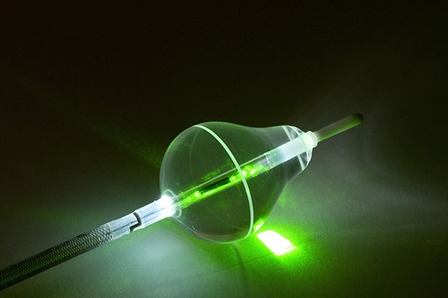
Results of the HeartLight US pivotal trial met both primary efficacy and safety endpoints and demonstrated a low learning curve for physicians using the HeartLight ablation System. Vivek Y Reddy (Mount Sinai School of Medicine, USA) presented the results, which randomised the HeartLight endoscopic ablation system (Cardiofocus) one-to-one versus the Thermocool catheter (Biosense Webster) at a Late-breaking Clinical Trials session at the Heart Rhythm Society (HRS) 36th Scientific Sessions (13-16 May, Boston, USA).
HeartLight is designed to provide physicians with a practical, easy-to-use treatment for atrial fibrillation with the ability to see within their patient’s heart and visually direct the application of laser energy to achieve durable pulmonary vein isolation.
Trial results show that when performing a single ablation procedure using the HeartLight System, the majority of patients experienced freedom from paroxysmal atrial fibrillation at 12 months. Moreover, the primary safety endpoint and the primary efficacy endpoint of freedom from atrial fibrillation at 12 months were satisfied for the pre-specified non-inferiority test as per the study design.
The study protocol permitted investigators to perform only a single pulmonary vein isolation (PVI) procedure using HeartLight. Investigators were able to use the control arm device for both PVI and other left atrial targets, with up to two control arm procedures allowed.
Reddy commented, “These results demonstrate that a group of physicians largely new to the HeartLight technique can equal their performance with the control arm device by using the system. Importantly, these results were obtained early in the learning curve from veteran radiofrequency catheter ablation practitioners with extensive experience with the control arm device.”
Andrea Natale, co-principal investigator of the HeartLight trial, (Texas Cardiac Arrhythmia Institute at St. David’s Medical Center, USA) added: “In addition to the impressive findings, more than 90% of the study investigators had no substantial prior experience in the clinical usage of the HeartLight catheter. An exploratory analysis showed that physicians performing 15 or more HeartLight ablation procedures achieved a higher success rate and fewer primary adverse events with the HeartLight device.”
The company plans to submit the pivotal clinical study results to the FDA in the near future as part of an ongoing modular pre-market approval process. It is important to note that because the results of the HeartLight study have not yet been submitted to the FDA for an independent review they are considered preliminary.
These data from the 21-centre randomised HeartLight trial add to the large body of clinical evidence encompassing nearly two dozen independent studies conducted over the last several years in the European Union supporting the CardioFocus HeartLight system. Recently, at the German Cardiology Society (DGK) meeting, these results were confirmed by several single-centre reports of high rates of freedom from atrial fibrillation recurrence measured one year after the performance of a single ablation procedure using the CardioFocus endoscopically guided laser catheter. To date, more than 2,800 patients worldwide have had their atrial fibrillation successfully treated using the HeartLight system.












